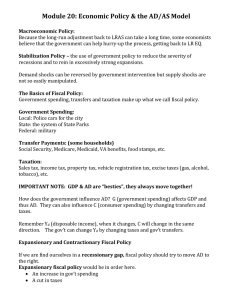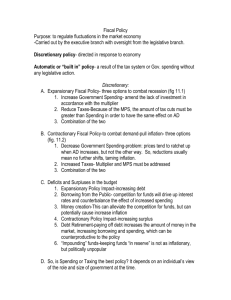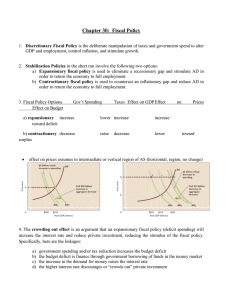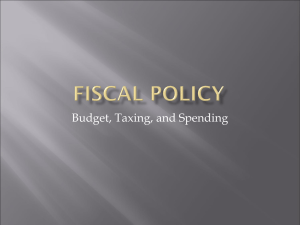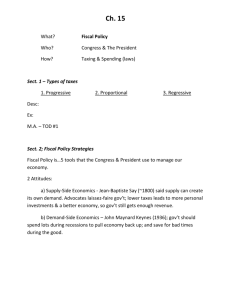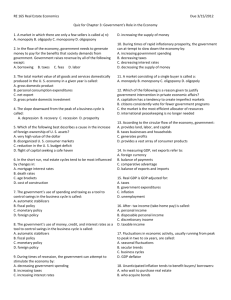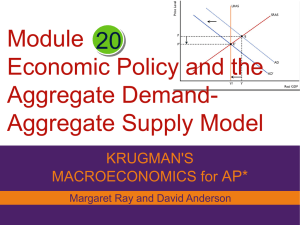Chapter 11 Review Sheet
advertisement
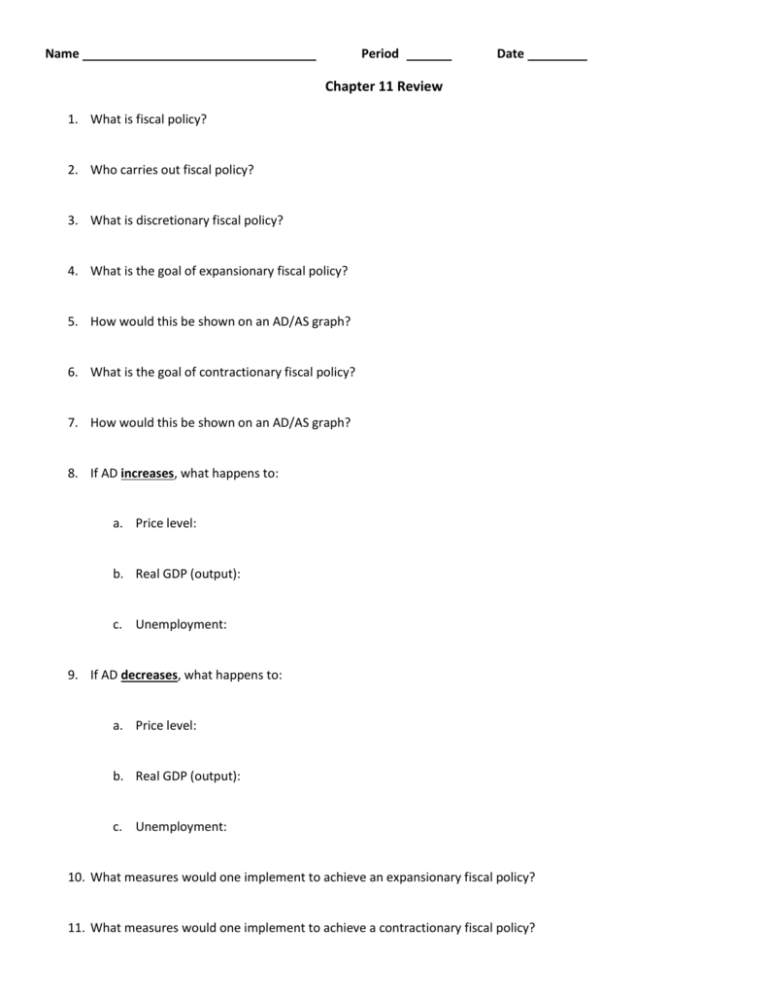
Name Period Date Chapter 11 Review 1. What is fiscal policy? 2. Who carries out fiscal policy? 3. What is discretionary fiscal policy? 4. What is the goal of expansionary fiscal policy? 5. How would this be shown on an AD/AS graph? 6. What is the goal of contractionary fiscal policy? 7. How would this be shown on an AD/AS graph? 8. If AD increases, what happens to: a. Price level: b. Real GDP (output): c. Unemployment: 9. If AD decreases, what happens to: a. Price level: b. Real GDP (output): c. Unemployment: 10. What measures would one implement to achieve an expansionary fiscal policy? 11. What measures would one implement to achieve a contractionary fiscal policy? 12. How do recessions contribute to deficits and debt? 13. What is a deficit? 14. What is crowding out? 15. Why do tax cuts have less of an impact on GDP than spending increases? 16. If spending was increased and taxes were cut by the same amount, what would happened to GDP? Why? 17. If one wanted to ensure expansion, what would one do to taxes AND spending? 18. If one wanted to fight inflation, what would one do to taxes AND spending? 19. The magnitude of the change to AD caused by a tax cut/spending increase depends on what? 20. How do we define the US public debt? 21. What form does the US public debt take? 22. What are built-in or automatic stabilizers? Give examples. 23. What is meant by the political business cycle? 24. Explain how lags hinder the effectiveness of fiscal policy. Recognition lag: Administrative lag: Implementation lag:


